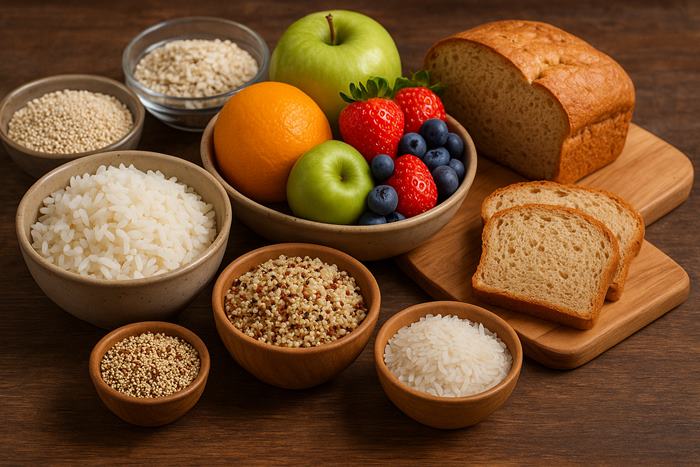Gluten-Free Food is becoming increasingly popular as more people discover the benefits of eliminating gluten from their diet. Whether you are living with Celiac disease, managing gluten intolerance, or simply embracing a gluten-free lifestyle, today’s wide selection of gluten-free options makes it easier than ever to enjoy delicious and healthy meals. In this guide, you’ll find a comprehensive gluten-free food list and practical tips for living gluten-free with confidence.
What is Gluten-Free?
Gluten is a protein found in wheat, rye, and barley. For people with Celiac disease or gluten sensitivity, eating gluten can cause digestive discomfort, skin issues, or even severe health problems. A gluten-free diet removes these grains, replacing them with safe and nutritious alternatives. Thankfully, gluten-free foods are now widely available, making it easy to maintain a healthy lifestyle without missing out on flavor.
The Complete Gluten-Free Food List
Eating gluten-free doesn’t have to feel restrictive. From naturally gluten-free produce to innovative snacks, here’s a list of the best gluten-free foods you can add to your diet:
1. Fresh Fruits and Vegetables
All fresh fruits and vegetables are naturally gluten-free foods. They are rich in vitamins, minerals, and fiber. Examples include apples, berries, oranges, carrots, and leafy greens.
2. Whole Grains and Starches
Some grains are naturally gluten-free and make excellent substitutes for wheat:
- Quinoa – perfect for salads and side dishes
- Rice – versatile and gluten-free
- Millet – nutritious and easy to cook
- Cornmeal – great for cornbread or coatings
- Tapioca – common in gluten-free baking
- Rice flour – popular for gluten-free recipes
3. Dairy Products (Without Additives)
Most dairy foods are naturally gluten-free. Choose whole or unsweetened options such as milk, cheese (avoid processed spreads), and plain yogurt.
4. Legumes and Nuts
Excellent sources of protein and healthy fats, legumes and nuts are naturally gluten-free. Examples: beans, peas, almonds, cashews, walnuts, chia seeds, and sunflower seeds.
5. Gluten-Free Condiments and Snacks
Always check for certified labels when buying packaged snacks. Safe choices include tamari soy sauce, popcorn, gluten-free crackers, gluten-free pasta, flax seeds, and herbal teas.
6. Gluten-Free Baking Essentials
If you enjoy baking, replace wheat flour with gluten-free flours such as almond flour, coconut flour, rice flour, or tapioca flour. These allow you to enjoy cookies, cakes, and breads without gluten.
Gluten-Free Sweets and Treats
Living gluten-free doesn’t mean giving up dessert. You can enjoy:
- Gluten-free cookies
- Gluten-free cakes and muffins
- Fresh fruit as a natural sweet snack
What to Avoid on a Gluten-Free Diet
While there are plenty of options, here are foods you must avoid unless labeled gluten-free:
- Bread
- Pasta
- Breakfast cereal
- Baked goods (cakes, muffins, cookies)
- Processed foods with hidden gluten
Tips for Going Gluten-Free
- Always read labels – Look for “Certified Gluten-Free.”
- Cook at home – Control ingredients and avoid cross-contamination.
- Stay hydrated – Water helps digestion and overall health.
Conclusion: Enjoying Gluten-Free Food Every Day
Living on a gluten-free diet is not about restrictions but about discovering new ways to enjoy food. From naturally gluten-free fruits and vegetables to gluten-free pasta, baked goods, and snacks, the options are endless. By focusing on whole, certified gluten-free foods and experimenting with new ingredients, you can create a healthy, delicious lifestyle that works for you. Embrace gluten-free food today and enjoy both flavor and wellness.

